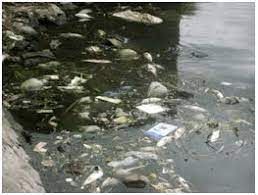Industrial activities particularly the tanning industry is considered to be a major source of pollution and tannery wastewater in particular, is a potential environmental concern. Tanning industry wastes poses serious environmental impact on water with its high oxygen demand, discoloration and toxic chemical constituents, terrestrial and atmospheric systems.
Tannery waste characteristically contains a complex mixture of both organic and inorganic pollutants. For example, chlorinated phenols and chromium were found to be closely associated with the tannery waste.
Chromium as inorganic pollutant is a transition metal and exists in several oxidation states, with trivalent Cr3+ and hexavalent Cr6+ species being the most common forms. Indeed chlorinated phenols (e.g. 3,5-dichlorophenol) as an organic pollutant associated with the tanning industry have been found to be highly toxic and affect the cellular compounds of organisms exposed to such waste.
The effluents from tanning industry adversely affect human life, agriculture and livestock. The residents, especially the tannery workers have been the victims of this pollution, which has led to severe ailments such as eye diseases, skin irritation, kidney failure and gastrointestinal problems.
Chromium, extensively used in tanning process, is carcinogenic. Cancer found as cause of death in some cases can be linked to chromium pollution in the groundwater. Water with a low pH is corrosive to water- carrying systems and in unfavorable circumstances, can lead to the dissolution of heavy metals in the wastewater.
The high pH in tannery wastewater is produced by lime because it is used in excess quantities and this causes scaling in sewers. A large fluctuation in pH exerts stress on aquatic environment, which may kill some sensitive species of plant and animals living there. Large quantities of proteins and their degraded products form the largest single constituent group in the effluent.

Due to sulfide discharged from the unhairing process, hydrogen sulfide is released at a pH value lower than 8.5. This gas has an unpleasant smell even in trace quantities and is highly toxic to many forms of life.
In higher concentrations, fish mortality may occur at a sulfide concentration of 10 mg/L Sulfide in public sewer can pose structural problems due to corrosion by sulphuric acid produced as a result of microbial action.
Read Also : General Impact of Wastes on Environment
Sewage contains sulfide in the range of 15-20 mg/L and composite tannery wastewater contains 290 mg/L. Suspended solids, apart from being societal nuisance, have their main effect when they settle. The layer so formed on the bottom of the watercourse, covers the natural fauna on which aquatic life depends.
This can lead to a localized depletion of oxygen supplies in the bottom waters. A further secondary effect is the reduced light penetration and consequent reduction in photosynthesis due to the increased turbidity of water.

